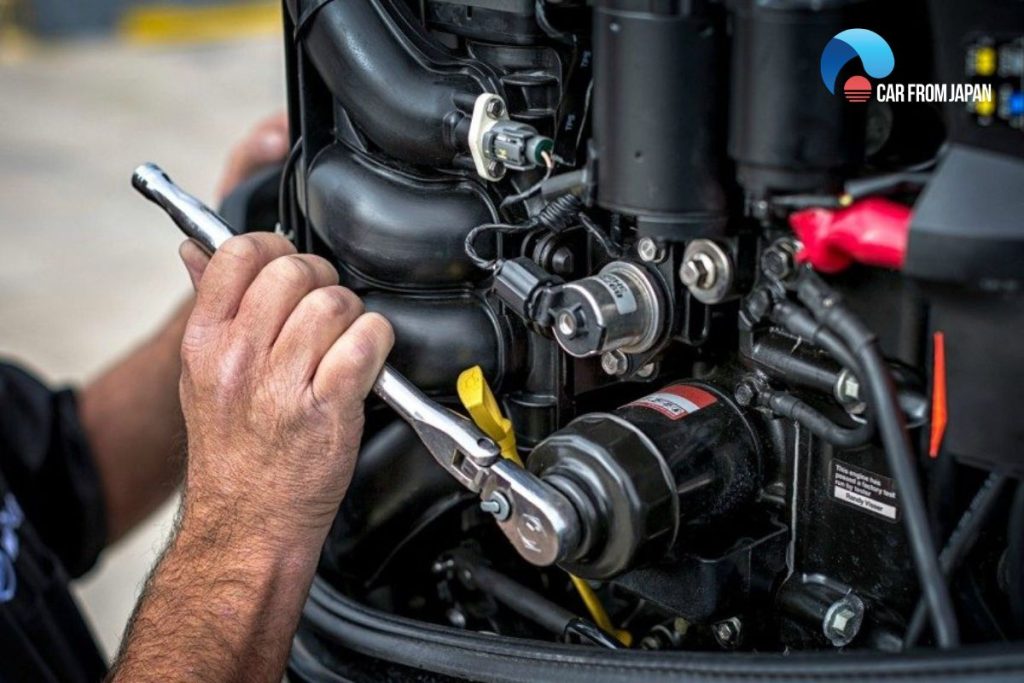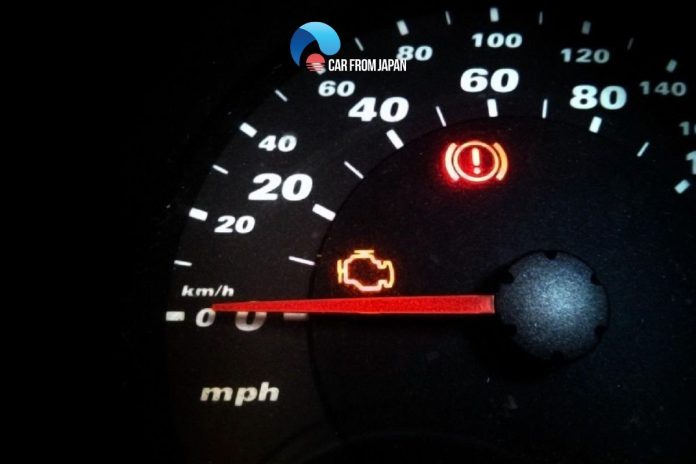Imagine you are driving and feel the need to speed up. Suddenly, you realize that the engine light is glowing on your dashboard and you fail to shift gears from the second or the third gear.
While you may take it as a mechanical failure, it may be the activation of the limp mode. If you wish to reset this mode, you would have to learn how to bypass limp mode. Well, here is the process.
Contents
Car Limp Mode: Everything To Know
Modern cars are equipped with many different features to protect the car as well as help the driver have a better experience including limp mode to help protect the engine and transmission from problems. So, let’s talk about the Limp mode meaning!
Limp mode (in some automakers called other names such as Limp Home Mode, Engine Failsafe Mode, …) is a self-protection mode installed on many modern car models today.
If there is a problem with the car’s engine or transmission, the vehicle’s computer system recognizes it and activates the vehicle into Limp mode.
This mode often reduces engine power, locking the car in a low gear intentionally to limit the engine rpm (RPM), to minimize damage to the engine and transmission but still ensure the vehicle can move to repair centers.
The Limp mode can be activated for several reasons. Therefore, drivers should find out the reasons why the car falls into this mode to find out how to get car out of limp mode?
Find Out The Reasons Behind The Limp Mode
In general, there are some common causes of a car in Limp mode as follows:
Low transmission fluid
Low transmission fluid (e.g. engine and transmission oils) may not guarantee stable vehicle operation. This can cause the vehicle to automatically switch to Limp Mode to protect the engine and transmission systems from further damage.
Sensor problems
There are a variety of sensors in the engine and transmission systems. If one of these sensors, for example, the MAF sensor, MAP, TPS (throttle position sensor) or the speed sensor isn’t working properly, it sends the wrong signal to ECU. When connected to the computer, the car will probably activate the Limp Mode.
Damaged electrical wiring system
Modern cars use a lot of electronic components, and wires are needed to connect them all. These wires may be damaged and can also cause the Limp mode to show on your car
Because when there’s a problem in the wiring (wires damaged by heat, impact, or even battery acid leaking in), even if a small wire fails, it won’t be able to send an electrical signal accurately which will cause the computer to realize that the part has failed.
Watch more this video from Mechanic Base to know more about Limp Mode!
What Will Happen If The Limp Mode Is On?
When your car is in Limp Mode, you can identify the common symptoms on the dashboard such as:
Reduce car performance
Reduce car performance: When in this mode, in most cases the vehicle RPM will be limited to 2,500 – 4,000 RPM and users can also find that the speed is also limited to 55 – 75 km/h. And this makes the car unable to run at high speeds as well as being limited when shifting to D3.
Limit speed
Vehicle acceleration will be slow due to reduced engine power. In addition, the vehicle may also experience vibrations and jerks.
Check engine light comes on
When the Check Engine light is on and flashing continuously, it may be a sign to drivers that the car engine is having a serious problem. Therefore, if detected, the owner should pull over to check or call an ambulance.
In addition, there are some other common symptoms such as limited functions (such as in brake lines) or shift lock error in D3.
Read More: The DIY Process to Reset The Car Computer
How To Bypass Limp Mode? The Step-By-Step Process
When a computer system in the car generates an emergency signal implying a transmission issue, it is through the “limp mode.” It is a foolproof mechanism that protects the car and the car inhabitants from further damage.
Once your car gets into limp mode, you would have to move out of it too. Let’s see how to go about the process.
1. Apply the brakes
The first step to deactivate the limp mode is to apply the brakes and make a stop at a safe spot. Let the engine rest for about five minutes without disturbing any system.
This step ensures that the inbuilt computer system aids in disabling every mechanism inside the car. Once five minutes pass by, you may try to power the car.
Shift gears until you successfully shift to the highest gear and vice versa. In case, you get successful, that implies that the limp mode is deactivated. This is one simple way as to how to bypass limp mode. Read on, for browsing through other effective ways.

2. Deploy a car diagnostic scanner
A device called a car diagnostic scanner can help detect the coded error messages produced by the car’s sensors. Using this scanner one could easily identify the reason why limp mode went on.
Whether it is the ignition problem or it is a false alarm; the car diagnostic scanner can make it certain.
If there are any issues with the boost deviation of the car, these scanners can help detect that too.
When a car makes a sudden stop; boost deviation error may occur, which, in turn, leads to limp mode activation. You could also refer to maintenance tips, for ways to reset the check engine light.
3. Battery disconnection
There may be a case that the car’s transmission may become prey to a loose internal connection. In such a situation, it would be appropriate to stop a car at a safe place and open the bonnet.
Detect where the car battery lies and detach its connections. All you have to do is wait for about half an hour before you reconnect it.
The underlying step is likely to reset the transmission memory on the whole. Once you restart the car after effective reconnecting, the limp mode will deactivate on its own. This is one of the most useful criteria when it comes to how to get a car out of limp mode.
4. Scrutinize automatic transmission fluid
The leak in the automatic transmission fluid is considered one of the common reasons behind limp mode activation.
In case, the fluid levels go low in the engine; lubrication is likely to suffer. Such a low level, in turn, could lead to a lack of control over the car by triggering the limp mode.
The right thing to do would be to stop your car at a level surface. Now, lift the car’s hood and read the level of fluid present on the dipstick.
If you find the levels to be below a certain standard, top it up with the required volume. Do not forget to detect the engine for leaks and fix them if any.

What To Do To Prevent Car Limp Mode
Fluid Maintenance
To prevent limp mode, you should check and top up your fluids regularly. Engine oil or transmission fluid, which lubricates and cools the system, should be changed at regular intervals recommended by major vehicle manufacturers.
Keep fluid levels low and contaminated to avoid overheating, limp mode activation, or unwanted engine wear.
Check the wiring
Faulty or loose wiring can disrupt sensor communication and contribute to limp mode activation as a safety precaution.
Regularly checking your vehicle’s wiring for signs of wear, fraying, or loose connections can prevent this communication problem and keep your Mercedes running smoothly.
Promptly addressing wiring problems can also prevent more serious electrical problems.
Temperature Monitoring
Keep a close eye on the engine temperature gauge as overheating can cause more severe damage and trigger limp mode for protection.
If the temperature gauge is consistently in the middle, it is a sign of a cooling system problem that requires immediate intervention.
Responding to warning signs
When using a vehicle, never ignore warning signs. From the simplest signs such as slow shifting, and acceleration, to warning lights, multiple flashing dashboard lights, or strange noises, all are early signs of potential major problems.
Do not delay taking your vehicle to a professional mechanic to control the damage and prevent limp mode from occurring at any time.
Engine Maintenance
The engine is the heart of the vehicle and its components need regular maintenance. Worn spark plugs can cause misfires and reduce engine performance, triggering limp mode in no time.
Similarly, worn engine belts or dirty air and fuel filters can restrict airflow and fuel delivery, affecting engine performance.
Overall, it is always essential to check and replace these parts regularly to maintain performance and prevent limp mode from silently damaging your vehicle inside and out.

FAQs on Car Limp Mode
Can a car go into limp mode without showing a warning light?
Yes, sometimes a vehicle may enter limp mode without triggering a check engine light or warning indicator.
This can happen if the issue is intermittent or if the ECU detects a problem but doesn’t classify it as critical enough for an immediate dashboard alert.
Why does my car go into limp mode only at highway speeds?
Limp mode triggered at highway speeds may indicate overheating, turbocharger problems, or transmission stress.
Some vehicles detect excessive load or pressure at high speeds and activate limp mode to prevent major engine or transmission damage.
Can I drive long distances in limp mode?
While technically possible, driving long distances in limp mode is not advisable. The car is running in a restricted state to prevent further damage.
Prolonged driving in limp mode can cause additional strain on the engine and transmission.
Will disconnecting the battery reset limp mode?
In some cases, disconnecting the battery for a few minutes can reset the ECU and clear limp mode.
However, if the underlying issue is not resolved, the car may re-enter limp mode shortly after restarting.
Does using the wrong fuel trigger limp mode?
Yes, using fuel with an incorrect octane rating or contaminated fuel can cause misfires, knocking, or poor combustion, which may lead the ECU to activate limp mode.
Wrapping Up
Limp mode is there for a reason! It indicates that there is a problem with the transmission system when there is still time.
As far as knowing how to bypass limp mode is in question, refer to the methods above. Lastly, visiting a mechanic is never too late whenever the need be.




1991 chevy truck 3500 dually 2 wheel drive when the service engine light goes on the transmission will go in to limp mode and stay in 2 great will turn off the truck for about 5 minutes and light will go off and will change from 1 to 2 great and stay there .I am getting a code 24 but I already changed the 2 speed sensor the input and the output what could it be thanks